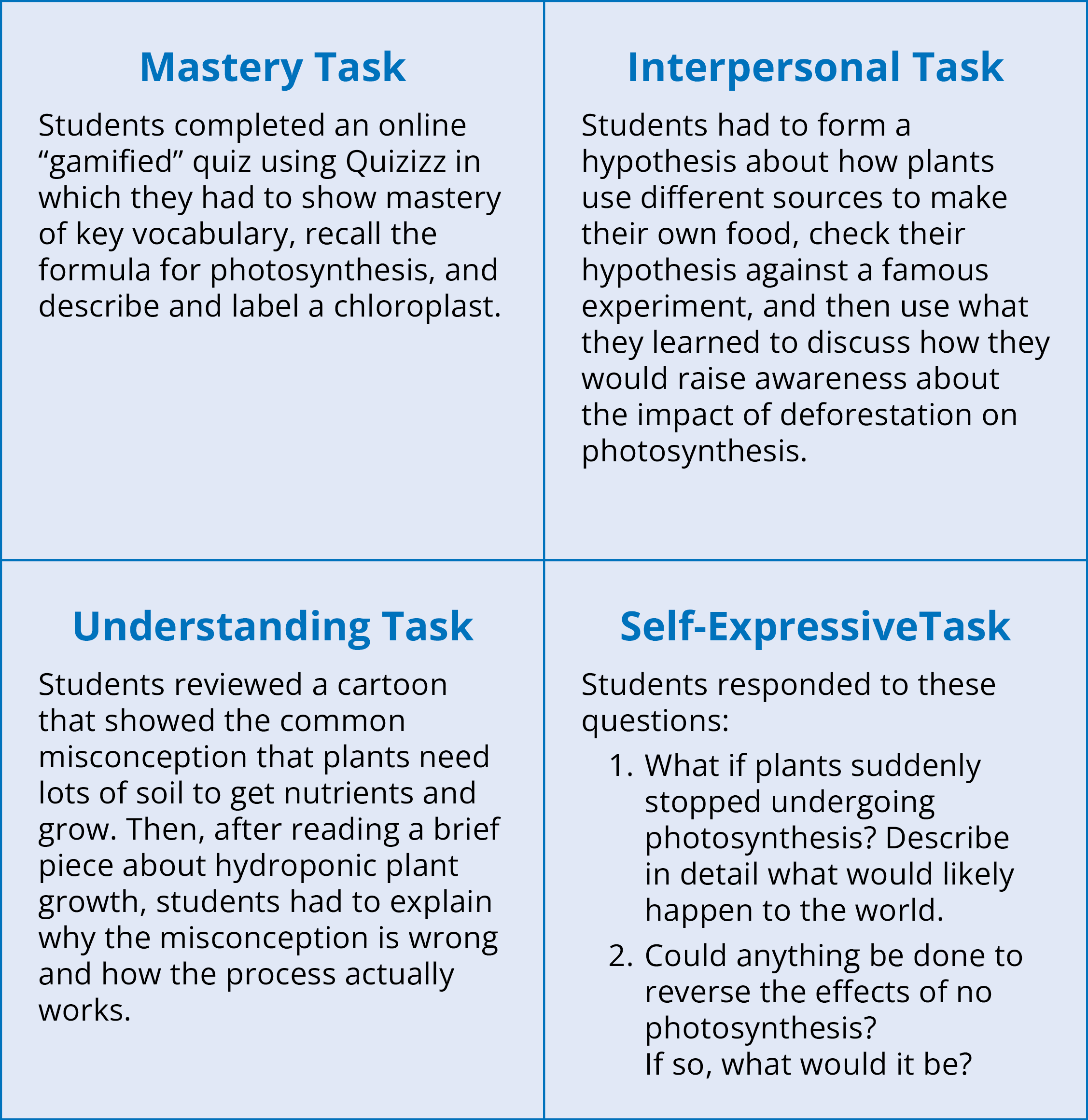How a High School Science Team “Raced” to Raise Student Engagement
by Ella Perini | April 5, 2024
Low student engagement is one of the most common challenges that educators across the country face, especially at the secondary levels. Of course, engagement is key to successful learning, because “tuned-out” students don’t think deeply about content, don’t commit to persevering when learning gets tough, and don’t build memories that stick.
It was precisely this challenge of student engagement that the science team at Middlesboro High School in Middlesboro, Kentucky sought to address as they planned out a unit on photosynthesis, a topic that’s not exactly known for its ability to create classroom sparks. Instructional Coach Carlena Carter and teachers Kristen Brock and Jeff McClelland began with the end in mind: How would the unit culminate in a way that students would look forward to all through the unit—and that would motivate them to commit to learning the content more deeply along the way?
Their first move was to build the culminating activity around Task Rotation (Silver, Jackson, & Moirao, 2011), a Thoughtful Classroom strategy which challenges students to think about the content in multiple ways and produce work that calls for different styles of thinking. According to Kristen and Jeff, the team chose Task Rotation because they knew that different kinds of tasks often motivate different students. They also recognized that variety itself increases engagement and that “same-old, same-old” tasks create learning ruts.
The figure below provides a brief description of the tasks students were asked to complete in each quadrant of the Task Rotation:
A good set of tasks was a good start. But the Middlesboro High School science team wanted to do even more to up the engagement ante, so they looked for a high-interest format that would motivate students further. Their first idea was an “escape room,” but they quickly realized that an escape-room format would limit their question types to multiple choice, which is not conducive to increasing engagement, nor compatible with the varied thinking inherent in a Task Rotation. Knowing that the team was interested in placing tasks at different stations around the school, media specialist Jennifer Green suggested the idea of an Amazing Race. Making it a race would engage students with friendly competition. Use of riddles and clues along the way would keep interest levels high and provide students with just enough information to figure out what to do and where to go next. That’s how the First Annual Middlesboro High School Amazing Race was born.
Here’s how it worked: The science team posted at different locations around the school QR codes containing links to each task and relevant content needed to complete the task. Working in groups of three, students worked cooperatively to complete each task. Teamwork really mattered, because the better the teamwork, the faster students could advance in the race. At each station, students received feedback from a teacher and revised their work in real time if it needed further thinking or development. Upon successful completion of each task, students had to solve a riddle, whose answer revealed clues about the next leg of the race. The format repeated: complete task, get feedback and revise, solve riddle, then head for the new location where the riddle directs you.
This schoolwide event garnered so much attention that Middlesboro Mayor, Boone Bowling, even got involved, filming a video to help kick the session off. But most exciting of all was the impact this event had on students. Students “went crazy” for the interactive nature of the Amazing Race. The energy was high, the students were engaged in deep and diverse forms of thinking, and the results exceeded everyone’s expectations. Students literally couldn’t wait to get to the next task and get to work. According to teacher Jeff McClelland, “the only thing that kept students from going into a full sprint was the school policy against running in the halls, which we had to enforce because excitement was that high.”
And while the impact was seen across the student population, the science team was pleasantly surprised by the teams that did best in this event. Teacher Kristen Brock shares, “Students who finished first in the race were not the students you might expect. Instead, it was those who may not fit the mold of star students, but who are every bit as capable. When they are engaged, they show you what they know.”
The results were reflected in the end-of-unit test results: Compared to previous years, there was a 15% increase in student mastery. And what about “comedown” afterward? The Middlesboro High School Science team was prepared for that possibility. Following the Amazing Race, students deepened their understanding through application by using an MIT LEGO® activity, in which they created models demonstrating the process of photosynthesis.
But more important, the team has made the commitment to the regular use of engagement-boosting Thoughtful Classroom strategies such as Task Rotation, Questioning in Style, Memory Box, Vocabulary Rating Knowledge, and Reading for Meaning to keep classroom instruction fresh and student interest levels high. Clearly, not every day can be an Amazing Race, but that doesn’t mean that daily science instruction can’t pique curiosity, stimulate interest, and get students to do the most important work of all: think deeply about what they’re learning. And of course, there’s always the next Amazing Race to look forward to.
One Good Thing Leads to Others…
Clearly, combining Task Rotation and the Amazing Race had the desired effect of increasing student engagement. But it’s interesting to note how many other research-based practices this event used to improve student learning:
- Friendly competition
- Cooperation
- Formative assessment
- Real-time feedback
- Task variety
- Movement
- Curiosity boosters (e.g., riddles)
References:
Silver, H. F., Jackson, J. W., & Moirao, D. R. (2011). Task rotation: Strategies for differentiating activities and assessments by learning style. Alexandria, VA: ASCD

